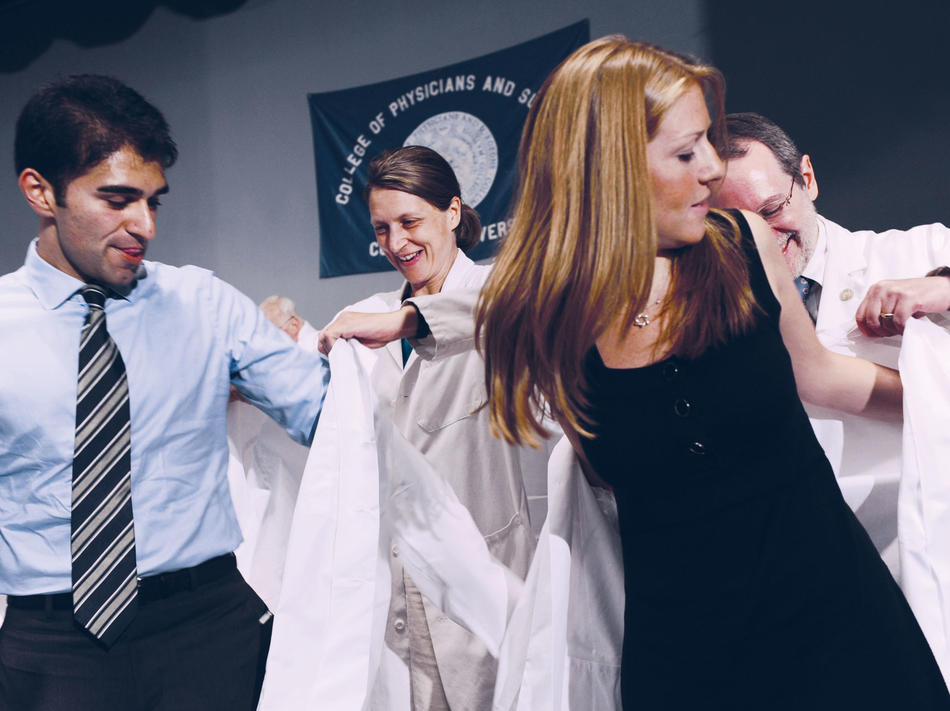Medical students at Columbia no longer have to memorize anatomy and physiology terms before they begin learning to interview patients. That’s one implication of a major curriculum overhaul implemented at Columbia’s College of Physicians and Surgeons this fall.
“It’s a tradition in medical school, going back to Flexner, that the first two years are basic science and the last two are clinical,” says Ronald Drusin, vice dean for education at Physicians and Surgeons. “But that shouldn’t necessarily be true.”
The new curriculum at Columbia’s medical school compresses the first two years of preclinical work, involving biomedical science lectures and anatomy and pathology labs, into 18 months. That’s made possible, say college officials, by eliminating redundancies inherent in traditional medical school curricula, which devote the first year to healthy body function and the second to disease. Now, courses at Physicians and Surgeons follow an “organ-systems approach,” teaching normal biological function and pathology simultaneously.
“We’re trying to eliminate unnecessary duplication and focus on subjects once, rather than having them come up repeatedly,” says Thomas J. Garrett, a professor of clinical medicine and director of the Glenda Garvey Teaching Academy at Columbia University Medical Center.
The new curriculum teaches students to interview patients about their medical history while, at the same time, the students receive training in core areas such as cell biology, embryology, histology, and pharmacology.
“We’ll spend time learning how you talk to patients in the context of a history and physical exam,” says Nat Langer ’11PS, a student representative to the Physicians and Surgeons curriculum committee. “I think this new approach will help students realize that a lot of things, like asking open-ended questions and listening to patients, are clinical skills you can develop in your first couple of years, not just innate abilities that you either have or you don’t.”



